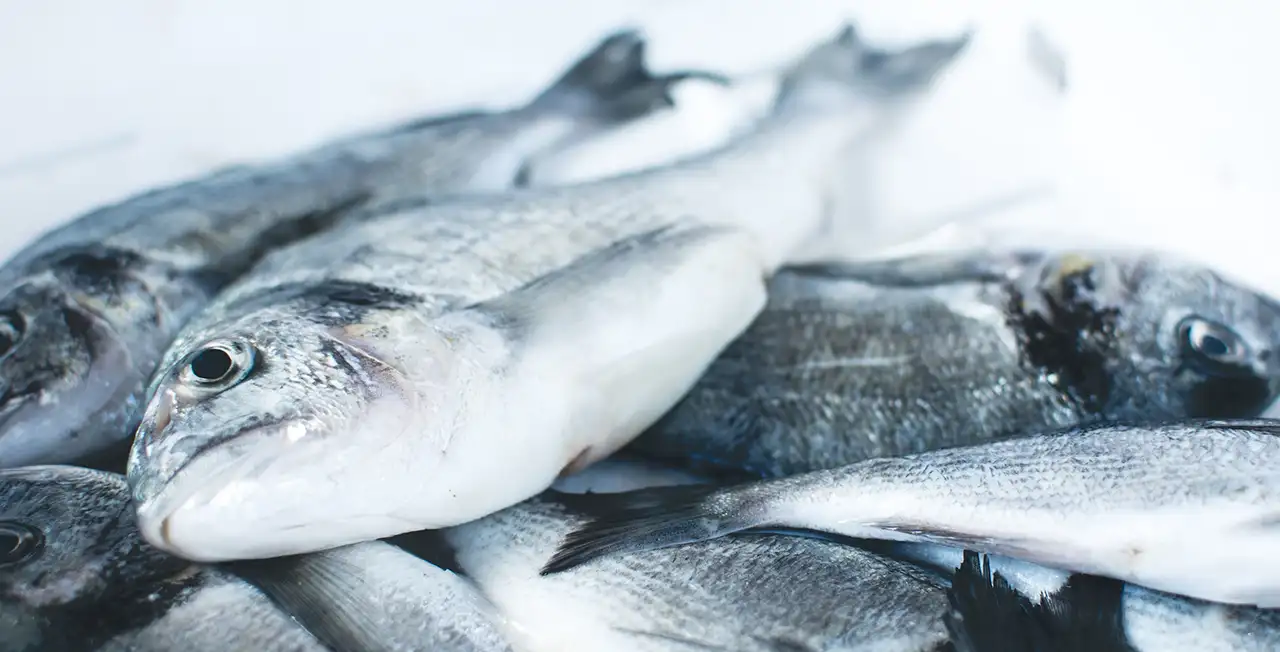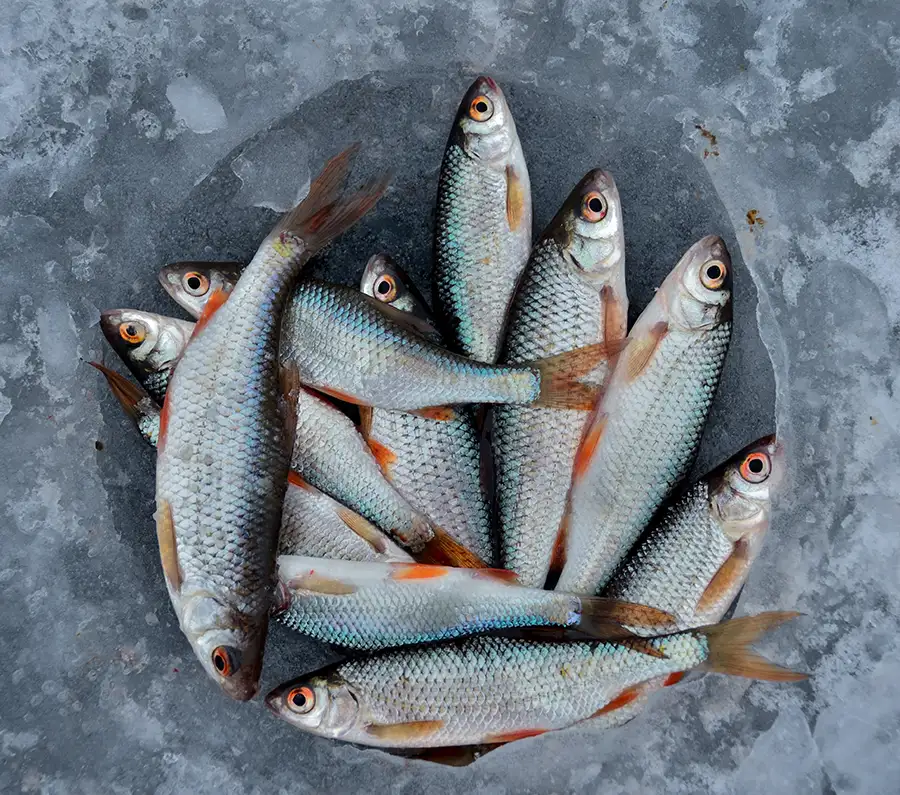
Buying whole fish gives you control over freshness and access to bones for stocks. To fillet fish, de-fin it to avoid sharp injuries, then scale it and gut it carefully. Remove the head for easier filleting.
We often buy pre-filleted fish for convenience, worry or price but the benefits of buying a whole fish far outweigh any of these elements. It is a skill that gives you complete control of the produce, allowing you to easily see the freshness of the fish and access to any bones, trimming, etc., with which to make your stocks.
When selecting your fish, always look for clear eyes and bloody red gills, not brown gills. Look for taught skin that hasn’t dried out but has a metallic look.
Round fish is defined as fish with a backbone along their upper body and a single fillet on both sides. They have an eye located on each side of its head. Examples would include Sea bass, Salmon, and Snapper.
First, we must ensure the fish has been descaled and gutted correctly, which is essential for storage and preparation. Normally your fishmonger can do this quickly and without fuss if you ask them. However, let us assume this still needs to be done.
It’s essential to de-fin the fish before scaling as this will reduce the risk of piercing your fingers or hands on a sharp fin whilst scaling, which can be quite painful and sometimes even cause nasty inflammations.
Put the fish flat on a chopping board and, using good strong scissors or poultry shears, cut off the fins on each side of the head and any fins that run along the top or underside of the fish. Please beware of the top fins, as they can be particularly sharp.

To scale the fish, return the de-finned fish to a chopping board or with a cloth underneath it to hold it in place; I like to do this in the sink as it’s easier to wash the fish at the necessary stages. Hold the fish’s tail firmly, and with the back of the blade of a dinner knife or some other blunt instrument, run the blade towards the head of the fish in the opposite direction to the way the scales lay. You will see them rise and become dislodged. Make sure you do this, over the whole fish, including the top of the fish and around the stomach cavity.
With the point of a sharp knife, pierce the stomach cavity of the fish, starting at the small hole on the underside, near the tail end of the fish. Run your knife along the soft underbelly towards the head, opening the stomach cavity. Remove any innards and thoroughly clean the fish. If you store the fish before you fillet it, it is essential to clean it well of any blood, guts or stomach content, as this will rapidly deteriorate and reduce the shelf life of the fish.
So now we have a de-finned, scaled and gutted fish ready for filleting.
It’s easier to filet the fish once the head is removed. With this in mind, cut across the fish at the base of the head at a V-shaped angle, towards the head, below the gill flap and fin towards the fish’s stomach. Do this on both sides of the fish and remove the head with any remaining innards, bloodlines or blood vessels.
Rinse the fish again.
With the tail pointing towards you, run the knife down the spine towards the tail using a long slicing action. Try not to saw the fish with jagged movements but use long slicing motions taking advantage of the whole length of the blade, running the knife between the backbone and the flesh. Try to keep the knife in the direction of the backbone and not the filet. Repeat this until the flesh begins to come away, always lifting the filet out of the way of the knife. This way, you will not damage the meat.
When you get to the rib section, allow the knife to follow the shape of the rib bones around them, using them as a guide, slice around them. Once you’ve removed the fillet, put it to one side.
Flip the fish over and repeat the process with the other side, starting at the tail and working towards the head. The second fillet may be a little more challenging to remove as it doesn’t have the other filet to support it, but the process is the same.


At Med.kitchen, our passion lies in crafting exceptional culinary experiences through our online platform. We specialise in sharing a wealth of knowledge via articles, recipes, courses, and online mentoring, aiming to inspire both novice and seasoned chefs alike. Our focus has shifted from private dining to being an online source of gastronomic inspiration, allowing you to explore and refine your culinary skills from the comfort of your home..